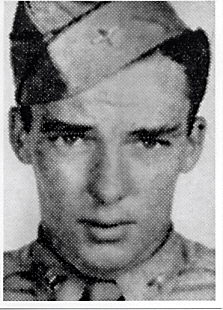 Eric Finzi is an artist of revolutionary range and vision.
Eric Finzi is an artist of revolutionary range and vision.
He has taken a formless and chaotic medium, resin, and given it discipline and form...on wood...aluminum...and copper. I present a few samples of his recent resin work here.
To see where Eric Finzi's art is on display, visit his news page and gallery.
In keeping with Robert Frost's command when asked to explain a poem, "What would you that I do? Explain it in other and less good words?"
I repost Eric's statement on his Website about the process he uses to create these revelations.
Working with epoxy resin is like trying to control chaos, thus providing a formative substance that might be characterized as born entropy. Resin painting is a type of performance art.
There is also an element of danger added as the fumes are sweet but deadly. The process begins with the mixing of the resin and its catalyst; a chemical reaction ensues and time becomes an important dimension in the work.
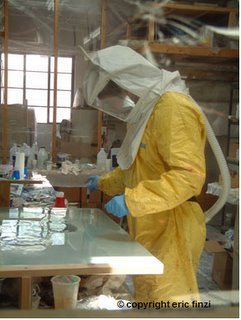 The painting is planned, like a play, with Act I, Act II, etc.
The painting is planned, like a play, with Act I, Act II, etc.
The painting you see represents the summation of many layers of chemical reactions, all moving with their own velocity to a final polymerized end. The challenge is to control the flow of resin using heat, cold, wind, gravity and viscosity as artistic tools. Syringes, needles and a propane torch are the resin painters brushes.
The paintings are temperature dependent and exude an organicity that defies their inanimate status. The polymerized painting portrays its temporal history as it captures the slow flow of resin.
These paintings continue to move after human hands have ceased to touch them. Their final destination can't be known until a day after starting the painting , when all Brownian motion has ceased and the flecks of paint are trapped like a fly in amber.
The painting you see is the final scene of a moving picture whose history is encoded in layers of resin. Not that Eric needs me to add anything about his art, but I was fortunate enough to tape him about his creation process.
I would have liked to have put it up here so you could see him speak for himself. Unfortunately, the Sony software I tried to install crashed my system...badly...and I had to do a complete system recovery. So, until I can get video software that XP likes, I will have to type out Eric's words, as here.
 [One blog note: I video interviewed Eric in 2003 when he visited our rebuilt house after the fire. His destroyed art was what allowed us to rebuild our kitchen because USAA was able to call the Walter Wickiser Gallery in New York where Eric had a show to confirm he was a "real" artist. Because he's also a dermatologist and cosmetic surgeon, USAA...like others...often find it hard to believe he runs a medical practice while creating so much art. Well, I was 18 and Eric was 16 when we met at the University of Pennsylvania, and I can assure you he's that kind of Renaissance guy.]
[One blog note: I video interviewed Eric in 2003 when he visited our rebuilt house after the fire. His destroyed art was what allowed us to rebuild our kitchen because USAA was able to call the Walter Wickiser Gallery in New York where Eric had a show to confirm he was a "real" artist. Because he's also a dermatologist and cosmetic surgeon, USAA...like others...often find it hard to believe he runs a medical practice while creating so much art. Well, I was 18 and Eric was 16 when we met at the University of Pennsylvania, and I can assure you he's that kind of Renaissance guy.]
"These paintings are made with epoxy resin and paint and made with multiple layers. I basically work using the different polymerization times of the resin, depending upon the temperature of the resin, and waiting a certain amount of time before I put the paint in, before I pour it, which is why it has multiple layers.
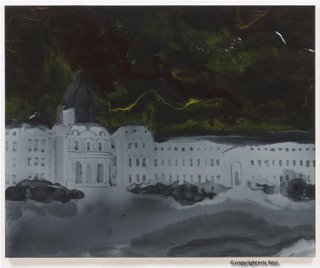
This is why it looks like it's sort of glazed with many layers of paint glaze, but it is actually all made out of resin. I work with this toxic resin and I've got a hood on and I have a compressor pumping air over my head. I basically suck in air from one end of the ware house and it travels 60 feet to the other area of the warehouse.
I walk around inside this room I constructed out of thin plastic sheet walls so you can see through. I can see out. I walk around connected to a hose so I can breath through a hose so I don't have to breath through a mask or a filter...but I can see out...so I just mix up my resin. I have my paints in a jar. I make the paints liquidy.
I even have a water bath where I incubate the resin so I can control the temperature...I can feel it in a cup...and the resin. If I want to polimerize quickly I stick it in a water bath and it gets hot. Then I wait until it is a certain temperature. Then I know its ready to do a certain type of thing. I either pour it out or squirt it out using needles, hypodermic needles.Those are my current tools, pretty much.
Me: "This resin technique of yours...does it have a name?
Eric: No.
Me: So... you can invent one.
Eric: Yeah...it's the Finzi resin technique (laughter).
 I tried an experiment once, just once, four years ago when I was working with resin but making sculptures that weren't flat. I tried an experiment and it looked promising and spent a summer playing around with it...and thought... this could be interesting if I could figure out how to get the paint in there and how to manipulate and control it. Now, I've figured out how to control it.
I tried an experiment once, just once, four years ago when I was working with resin but making sculptures that weren't flat. I tried an experiment and it looked promising and spent a summer playing around with it...and thought... this could be interesting if I could figure out how to get the paint in there and how to manipulate and control it. Now, I've figured out how to control it.
Even though my paintings looks like they are random and has that look to it, I'm in control and I know which way things are going to move. It's not a random piece. Because I can push the paint out of the way or use compressed air or get the bubbles out with a propane torch.
I do the whole thing flat because otherwise the paint would run off the whole thing. When I think the painting looks good, I take a torch and go over the entire painting. The latest thing I'm doing is using other base materials, like aluminum.
Eric painted this portrait of me that is in my Poetslife blog profile. It's a long story, but I don't have the painting anymore. All I have is this photo from a "Sixties" party we had when I was at the Johns Hopkins School of Advanced International Studies living on Capital Hill at 6th and E. Capital Street, which is why I am peering out of the corner of this photo/painting in the bottom left.
Here are a few more photos of Eric's work.
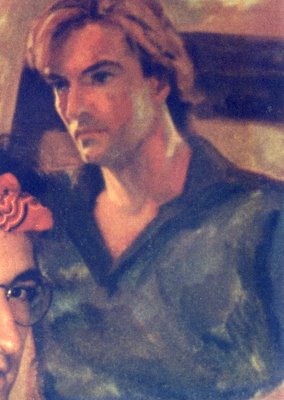
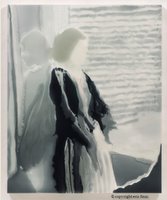
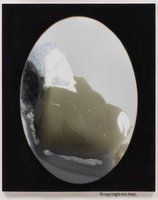
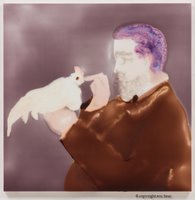
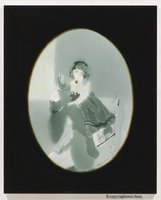
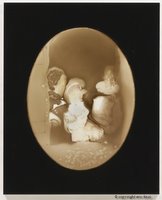
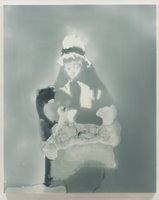
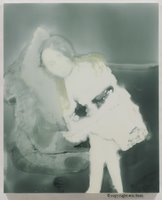
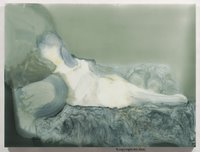
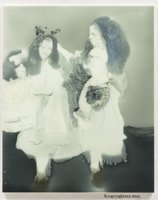
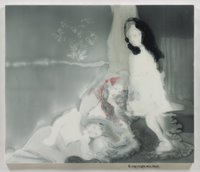
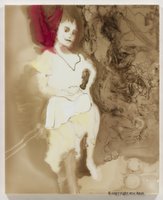
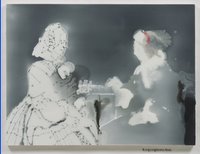
poetslife
 Eric Finzi is an artist of revolutionary range and vision.
Eric Finzi is an artist of revolutionary range and vision.  The painting is planned, like a play, with Act I, Act II, etc.
The painting is planned, like a play, with Act I, Act II, etc.  [One blog note: I video interviewed Eric in 2003 when he visited our rebuilt house after the fire. His destroyed art was what allowed us to rebuild our kitchen because USAA was able to call the Walter Wickiser Gallery in New York where Eric had a show to confirm he was a "real" artist. Because he's also a dermatologist and cosmetic surgeon, USAA...like others...often find it hard to believe he runs a medical practice while creating so much art. Well, I was 18 and Eric was 16 when we met at the University of Pennsylvania, and I can assure you he's that kind of Renaissance guy.]
[One blog note: I video interviewed Eric in 2003 when he visited our rebuilt house after the fire. His destroyed art was what allowed us to rebuild our kitchen because USAA was able to call the Walter Wickiser Gallery in New York where Eric had a show to confirm he was a "real" artist. Because he's also a dermatologist and cosmetic surgeon, USAA...like others...often find it hard to believe he runs a medical practice while creating so much art. Well, I was 18 and Eric was 16 when we met at the University of Pennsylvania, and I can assure you he's that kind of Renaissance guy.] I tried an experiment once, just once, four years ago when I was working with resin but making sculptures that weren't flat. I tried an experiment and it looked promising and spent a summer playing around with it...and thought... this could be interesting if I could figure out how to get the paint in there and how to manipulate and control it. Now, I've figured out how to control it.
I tried an experiment once, just once, four years ago when I was working with resin but making sculptures that weren't flat. I tried an experiment and it looked promising and spent a summer playing around with it...and thought... this could be interesting if I could figure out how to get the paint in there and how to manipulate and control it. Now, I've figured out how to control it.
